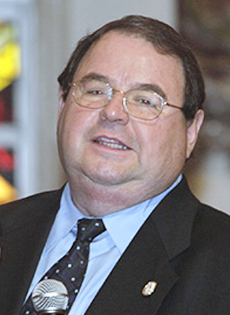
La liturgia: El arte de celebrar la fe
Monday, July 29, 2019
*Rogelio Zelada
En una reunión de pastoral y vida parroquial, un grupo de laicos se quejaba ante el párroco porque la celebración dominical de la eucaristía, “era demasiado larga, insípida, monótona y aburrida”. El párroco, que era quien siempre la presidía, muy molesto, les contestó: “Pues, prepárense, que el cielo es una Misa que no se acaba nunca!”.
Una justificación no exenta de ambigüedad ya que, si bien la Misa no es un espectáculo para entretener a los creyentes, la forma de celebrar los sagrados misterios de Cristo debe ser el lenguaje con que la Iglesia vibra y hace vibrar la experiencia vital de la comunidad. Un lenguaje articulado en la más profunda convicción cristiana, que saca de la historia y de la teología los signos para celebrar y vivir la fe que ha recibido del mismo Cristo, de la tradición fundante de los apóstoles y del enriquecimiento que la reflexión a lo largo de siglos ha ido aportando a las formas litúrgicas.
Todo lo que es objeto de la fe tiene su lugar en la oración de la Iglesia. Celebramos aquello que creemos y toda celebración es una reafirmación en la comprensión de las verdades a las que somos llamados a adherirnos desde adentro. La liturgia no solo celebra la fe dentro de un modelo de Iglesia, sino que lo manifiesta. No sólo celebra los acontecimientos (el recuerdo del pasado), sino también todas las afirmaciones que brotan de las experiencias importantes que ha vivido y vive actualmente. La ley y las formas de oración, celebración y culto, no son únicamente la ley de la fe sino también la ley del ser y el hacer de la comunidad creyente; porque hay una relación directa entre la manera de entender el presente en que se vive y, desde esa experiencia compartida, asumir una determinada imagen de Dios, de Cristo, de la Iglesia y también de la liturgia y de la acción pastoral.
El antiguo lenguaje de la liturgia ha adquirido expresiones mas actuales a partir de la gran renovación del Concilio Vaticano II. San Juan XXIII advertía a los padres conciliares que la mejor forma de conservar el tesoro de la tradición y la fe no era “guardarla en un museo”, sino devolviéndole la vitalidad propia y la necesaria comprensión de los signos y ritos por parte del pueblo de Dios, válido y verdadero celebrante de la liturgia.
En los primeros siglos de la Iglesia se accedía al bautismo a través de una auténtica conversión consolidada por el proceso del catecumenado, que demoraba el tiempo que fuera necesario; una vez que el candidato, después de la cuaresma y en la noche de la vigilia pascual, era plenamente iniciado a través de los sacramentos del Bautismo, la Confirmación y la Eucaristía, el obispo los convocaba durante las siete semanas de pascua para iniciarlos en la comprensión de los contenidos y el lenguaje sagrado de la liturgia.
Estas catequesis llamadas “Mistagógicas” completaban la instrucción recibida durante el catecumenado y permitían a los neófitos entender el significado de los ritos, signos y símbolos que podía encontrar en las celebraciones comunitarias. La catequesis mistagógica era imprescindible para que el creyente accediera al entendimiento del lenguaje litúrgico y pudiera entender y disfrutar a plenitud de los sagrados misterios de Cristo.
Con el paso de los siglos y el devenir de la Iglesia, estas catequesis fueron abandonadas y la celebración de la asamblea creyente se convirtió en un rito misterioso al que había que asistir en silencio, sin participación exterior, separado por la barrera del latín, exento de visibilidad, con el altar ahogado por inmensos retablos, en el que la más importante liturgia, la de la Eucaristía, aparecía como asunto exclusivo del sacerdote o del obispo y que nos obligaba a “oír Misa los domingos y fiestas de guardar”, con una actitud pasiva y al menos, aunque tardíamente, siguiendo lo que pasaba ante nosotros con la ayuda de un misal bilingüe.
La renovación litúrgica nos hizo saltar desde la extrema pasividad a la que estábamos reducidos en la liturgia pre-conciliar, a la extrema exteriorización en una participación plena, activa y consciente de todos los ritos del culto católico, pero con la deficiencia de la ausencia de una catequesis simbólica que ayudara en comprensión de la rica tradición celebrante de la Iglesia. Nos queda el reto de asumir el entendimiento del sentido de los ritos, de los ritmos del año litúrgico, del valor de las fiestas, de la apropiación de los gestos que se realizan y las palabras que se pronuncian, de asimilar los textos que se proclaman, se recitan y se cantan y en definitiva de dejarse penetrar por las imágenes que se observan y los perfumes que se huelen. Se nos invita a celebrar bien para dar la mejor imagen de una Iglesia que, alimentada en el espíritu, manifiesta su verdad en la calidad de los signos.
San Juan Pablo II nos recordaba que “la asamblea alitúrgica es el signo que da hospitalidad a Cristo y a los que él ama”. Hay que cuidar de la calidad de la liturgia, de los signos, las personas y el lugar de la celebración de la fe, para que estos hablen por sí mismos, catequicen, manifiesten, y guíen a Cristo. De esta manera la asamblea de los fieles se transforma en el gran signo de la Palabra de Dios, escuchada y asumida, expresada en la oración, el canto, la música, las personas, los colores, las vestiduras, y el silencio; se trata de manifestar la conexión entre lo humano y lo divino para transparentar la presencia de Cristo en el hermoso centro de la liturgia.
Tal como pedía el papa Pablo VI al comienzo de la aplicación de la reforma litúrgica: “dediquen sumo cuidado al conocimiento y la aplicación de las normas con las que la Iglesia quiere celebrar el culto divino”. Y también reconocía en su alocución que esto “No es cosa fácil, es cosa delicada, requiere interés directo y metódico, requiere asistencia personal, paciente, amorosa, verdaderamente pastoral”.
Y en eso estamos...


Comments from readers